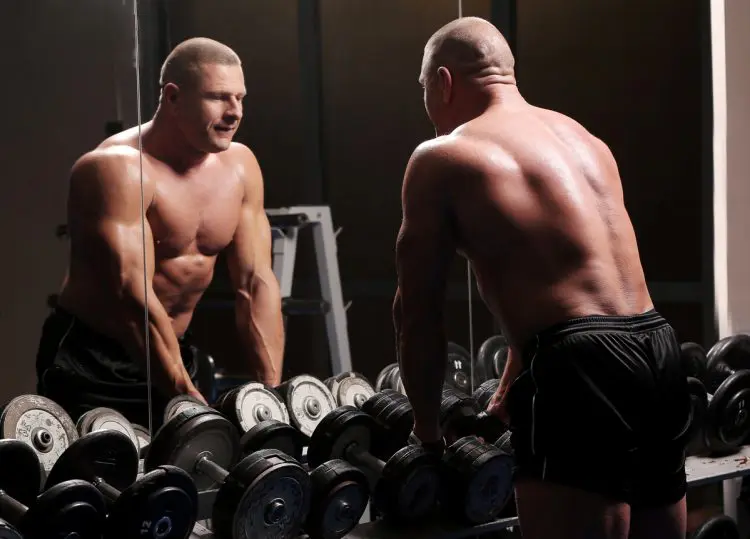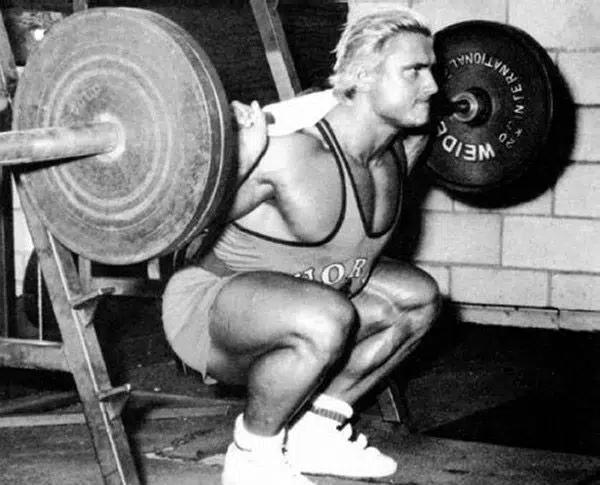Whether you want to build muscle, get stronger, lose fat, or get fit, you need to pay your dues in the gym. That means training with intensity and consistency while preferably following a well-designed program. You also need to pay attention to your diet and make sure you’re getting enough sleep.
However, even then, none of these things guarantee that you’ll always have great workouts. Sometimes, despite your best intentions, things won’t go to plan.
And is there anything worse than leaving the gym thinking, “well, that was a waste of time!”?
While we can’t guarantee you’ll never have a bad workout again, these tried-and-tested tips should make unproductive workouts much rarer.
How to Make Every Workout Better
Whether you’re a seasoned gym-goer or new to exercising, here are 13 tips and tricks to take your workouts to the next level!
1. Consume slow-acting carbs a couple of hours before your workout
Level Up Your Fitness: Join our 💪 strong community in Fitness Volt Newsletter. Get daily inspiration, expert-backed workouts, nutrition tips, the latest in strength sports, and the support you need to reach your goals. Subscribe for free!
According to many fitness experts and nutrition gurus, carbs are best eaten in moderation or even avoided completely. While that might be the case if you want to lose weight fast, low-carb diets are not always the best option if you want to train long and hard.
At low levels of intensity, your body mainly uses fat for fuel. But, at higher intensity levels, your body uses glucose, which it gets from carbs.
Give your muscles more of what they need by consuming a serving or two of slow-acting carbs a couple of hours before your workout. This will give you time to digest your meal, so your stomach is empty, and so the carbs are converted to glucose.
Good slow-acting carb foods include:
- Oats and oatmeal
- Brown rice
- Brown pasta
- Whole wheat bread
- Quinoa
- Lentils
- Beans
While there is nothing especially wrong with training in a fasted state, especially when you’re doing low-intensity steady-state cardio (LISS), you’ll probably feel stronger if you consume carbs an hour or two before hitting the weights or doing HIIT.
2. Drink some coffee
Coffee is the world’s favorite stimulant. Studies have shown that 200-400mg of caffeine before a workout increases fat burning, boosts endurance, reduces muscle pain, and allows you to train harder and longer (1).
Caffeine is such a potent energizer that, as recently as the 1960s, it was on the International Olympic Committee’s list of banned substances!
You can chug a cup of coffee or two before hitting the gym or, if you prefer, have a shot or two of pre-workout powder, most of which contain a substantial hit of caffeine. Combine your caffeine with 5 grams of creatine for an even more reliable, longer lasting energy boost.
3. Upgrade your warm-up
A productive workout starts with a good warm-up. Warming up prepares your muscles, joints, and nervous system for what you are about to do. However, while warming up can have a significant impact on workout performance, a lot of lifters either warm up incorrectly or don’t warm up at all.
So, start your workout the right way with a better warm-up.
Begin with five to ten minutes of light to moderate intensity cardio. This will raise your core temperate and get your blood and synovial fluid pumping. Start easy and gradually increase the intensity until you are slightly out of breath and feeling warmer.
Then, spend a few minutes dynamically stretching and mobilizing the joints and muscles you are about to train. Not sure where to start? Try this five-minute mobility program.
Finally, finish your warm-up with some muscle activation drills. For example, do a few sets of five squat jumps before deadlifts or back squats. Alternatively, try a couple of sets of incline plyo push-ups before upper body workouts. These exercises help fire up your nervous system to increase muscle fiber activation, leading to greater strength, power, and performance.
4. Try the over warm-up method
The over warm-up method maximizes muscle strength, power, and performance. It fires up your central and peripheral nervous system so that you can recruit more muscle fibers.
The over warm-up method involves doing ramped sets up to and just beyond the weight you’re going to train with. This will make your actual training weight feel lighter, and you should find you can do more reps with that weight.
For example, let’s say you’re planning on doing five sets of five bench presses with 100kg/225 lbs.
Your ramped sets should look something like this:
- 10 reps empty bar (20kg/45lbs)
- 7 reps 60kg/135lbs
- 4 reps 75kg/165lbs
- 2 reps 90kg/200lbs
- 1 rep 110kg/240lbs
- 5 reps 100kg/220lbs (first work set)
That single rep with 110kg/240lbs will make your first work set with 100kg/225lbs feel lighter and easier, and that’s a great way to start any workout!
5. Pump up the tunes
Most gyms play music, but that music may not be conducive to a productive workout. After all, the gym owners have to cater to the majority of members, and that may mean their musical choices are very mainstream.
The right kind of music can help boost training motivation, improve focus, and increase aggression (2). With an appropriate soundtrack, you should find you can train harder and longer.
So, create a playlist of your favorite training tunes and download it to your phone or MP3 player. Then, grab your headphones and let the music drive you to a better workout.
As an additional benefit, your headphones are a great sign that you don’t want to stop and talk to anyone while you’re training, removing another common source of workout distraction.
6. Set a time limit to your workout
It’s all too easy to let the intensity of your workout drop when you have no time limit. After all, with no cut-off time, what’s to stop you from resting a little longer between sets or exercises? The longer your workout, the lower the intensity level is likely to be, and that could make your training less effective.
Avoid this problem by allocating a set time to your training session – say, an hour. With the clock ticking, you are much less likely to stop for unplanned breaks or otherwise reduce the intensity of your workout.
Knowing you only have an hour to train will keep you focused on the job at hand, ensure that you move quickly from one exercise to the next, and help make your workout more productive.
7. Put your phone on airplane mode
Level Up Your Fitness: Join our 💪 strong community in Fitness Volt Newsletter. Get daily inspiration, expert-backed workouts, nutrition tips, the latest in strength sports, and the support you need to reach your goals. Subscribe for free!
Contrary to what a lot of people think, the world won’t stop turning just because you don’t answer your phone for an hour or so. The same is true for updating your social media, watching YouTube, or playing Candy Crush.
While your phone is undoubtedly a valuable tool, it can also be a distraction and the cause of unproductive workouts.
Unless you are waiting for a crucial call, like a life-or-death update from your doctor, put your phone on airplane mode and forget about it for the duration of your workout. With fewer distractions, you’ll be able to put more mental and physical energy into your training.
8. Time your rest periods
Your rest periods can significantly impact the effectiveness of your workouts. Rest too long, and you’ll be so recovered that your training will lose intensity. But, don’t rest long enough, and you may not be able to lift such heavy weights or do enough reps to achieve the results you want.
While you could just rest until you feel recovered, you’ll probably under or overestimate how long you need between sets.
Avoid this problem by timing your rest periods and starting your next set when your countdown clock tells you to do so. In general, the lower the reps and the heavier the weights, the longer your rest needs to be. Conversely, for light weight, high-rep training, short rests are best. Regardless, your rest sets should match your workout goal.
Read more about rest periods here.
9. Work out with a training buddy
There is a reason that most top bodybuilders have training partners – working out with a buddy increases the likelihood of having a good workout. Training with a partner has several benefits, including:
Accountability – it’s harder to skip a workout when you know you’re supposed to meet someone at the gym. You’re also less likely to be late.
Motivation – whether you go first or second, you’ll probably want to outwork your training partner. Training with a buddy invariably means you’ll pump out more reps or use more weight than you would alone.
Safety – training on your own usually means stopping your set a rep or two before reaching failure. Working out with someone else allows you to push beyond failure as they can spot you and help you through a couple of forced reps.
10. Change your program from time to time
Your body is the master adapter. It responds to the stress of your workouts by getting bigger, stronger, and fitter. But, if you do the same workout over and over again, eventually, it will cease to be effective. In simple terms, your body will be accustomed to your workout, and there will be no stimulus for it to change.
While you don’t need to alter your workout every time you hit the gym, you should probably mix things up every six to eight weeks or so. If you don’t, you could find yourself stuck in a training rut.
Check out our comprehensive library of workouts here.
11. Record your workouts and set goals based on your prior performance
Whether you use a notebook or an app on your phone, not recording your workouts could be the missing link that’s undermining your progress. Recording details like exercise name, weight, sets, reps, and recovery allow you to track your progress. Looking back over the last few weeks should provide a source of pride and motivation.
Also, you can use your current and prior performance to set goals for your next workout.
For example, if you successfully do three sets of six deadlifts with 140kg/305lbs, next time, you could plan to do:
- Four sets instead of three
Or - Three sets of seven instead of sets of six
Or - Use 145kg/320lbs
Regardless of which option you use, you will be assured that your next workout will be more demanding than your last workout, and that’s one of the keys to making progress.
12. Front-load your training week
In gyms all around the world, Monday is Chest Day. While chest training is undoubtedly important, it’s not the most challenging workout of the week. That award goes to leg day.
Energy and motivation levels tend to decrease as the week progresses. As such, you may find it hard to drag yourself through the workouts at the end of the week. Because of this, it makes sense to plan your most strenuous workouts for the start of the week and the less demanding workouts for the end of the week.
For example:
- Monday – legs
- Tuesday – back
- Wednesday – chest
- Thursday – rest
- Friday – shoulders
- Saturday – arms
- Sunday – rest
Using this approach, the workouts at the end of the week should be shorter and more manageable than those at the start. So, even if you’re feeling tired, you should still be able to train hard enough to trigger increases in muscle strength and size. You’re also less likely to skip those later workouts because you’re running low on energy or motivation.
13. Enjoy the occasional deload week

One way to avoid this problem is to use deload weeks.
A deload week is a short period when you either take a week off training or work out less than usual. This provides your body with extra time for recovery. Rather than lose strength, you’ll rest up and bounce back stronger and into another productive period of training.
A lot of exercisers are very reticent to take time off. Still, while such dedication is to be applauded, it can also be self-defeating. If your workouts are starting to feel like a slog, or you are not making gains you want, a deload could help.
Read more about when and how to deload here.
Wrapping Up
Your time and energy are valuable commodities, and the last thing you want to do is waste them on bad workouts. Everyone has the occasional unproductive workout, but if it happens more than a couple of times in succession, you may find yourself going backward instead of forward.
Use the strategies, tricks, and tips in this article to make every workout better and reduce the chances of having to suffer through a bad workout.
But, if you do find yourself in a workout that’s not going to plan, don’t be afraid to call it quits and save your energy for another day. It’s sometimes better to retreat, regroup, and come back stronger than keep on flogging a dead horse.
References:
1 – PubMed: Caffeine and exercise: metabolism, endurance and performance (source)
2 – PubMed: Effect of different types of music on exercise performance in normal individuals (source)

















